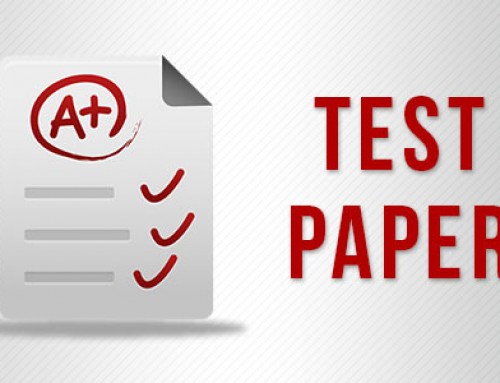So, in the last lecture if you remember we had discussed the effect of dilution and mixing of
solution and also we had discussed these calculations which we do in stoichiometry based
on the strength terms like on basis of molarity, you had seen acid based neutralization or
double displacement example in which you had seen precipitation of barium sulphate and
you had found that how much molarity of barium fluoride solution or how much volume of
barium flouride solution was require, this kind of question, we had seen. Now, today what
we are going to do is, we are first going to review one important aspect in dilution which is
effect of temperature on molarity and molality. What is the effect of temperature on
molarity and molality? Can you tell me what is the effect here. Okay, first tell me the
definition of molality, molality. It is represented by small m, number of moles of solute
divided by the mass of solvent in kgs, absolutely right. And what is the expression for
molarity? Number of moles of salute …in all these terms which is the term dependent on
temperature. So, we say that, this term volume is temperature dependent, since this is
temperature dependent term, we observe that generally as temperature increases, what
happens to volume? It increases, you read expansion, right, thermal expansion, and if we
heat then the volume of the solution is going to expand. So what happens to morality? You
can write, molarity of a solution decreases with increase in temperature. Correct, can
everyone understand this. Molarity of a solution decreases with increase in temperature.
What happens to molality? You can write it here, molality is independent of temperature.
Till here it is okay, everyone understands. Everybody wrote it.
Today what we will do, is first we will note down some important information, you can write
it down. Stoichiometric calculations involving gases. When we have to do stoichiometric
calculations involving gases that time we require some data like, vapour density of a gas, we
will abbreviate it as VD is equal to the molecular weight of the gas divided 2. Remember this
and we will see its proof in the gaseous state. For now just memorise it, okay. Second is you
must be aware of one very important data which you have learnt in 9th, when you studied
the properties of gas. That 1 mole of a gas at STP occupies how much, very good, 22.4 litres.
Now, in this particular case there is very important thing to note down, what is the definition
of STP? STP stands for Standard Temperature and Pressure. Now, in this particular case we
will say that temperature is taken to be zero degrees centigrade or which is 273 Kelvin and
pressure is taken to be 1 atmosphere. Please, understand, when you are writing 22.4 litres it
is corresponding to 1 atmosphere and this is old convention which is still followed because
most of the questions that are present in the books follow this convention. That is why now
also we remember the 22.4 litre data. But if you were to see the new convention, according
to new convention we write down that 1 mole of a gas at STP occupies 22.7 litres. And the
change that occurs in this, that is STP which is again standard temperature and pressure but
this time what will be the temperature. 273 Kelvin just like last time but pressure is 1 bar.
For now you have to assume that atmosphere and bar are units of pressure. There is no
need to understand the relationship between two of these. You can explore that in the
chapter of gaseous state. That time you will go into detail. You will learn more units like
millilitre of mercury, centimetre of mercury, okay, all these things we will discuss at that
time. We will do all the relations, for now we will just keep this much in mind. Now the third
aspect which you have to remember PV is equal to nRT which is called as the Ideal Gas
Equation, very good. Now, in this case we say P is representing what, T representing, V
representing, n represents and we will write all these things. P represents pressure, V
represents volume, n represents number of moles and T represents temperature, keep in
mind about temperature, as temperature is written always as Kelvin, temperature is always
marked K, okay and R is the, have we done this before, universal gas constant, do you
remember its value. Right, everybody copied till here, everybody mark it. The notations
whatever I am marking please mark it first and then we will discuss how to do it. Everybody
wrote it? Now, the value of R comes out as 8.314 joules per mole per Kelvin. Now this is the
SI unit which is more relevant in thermodynamics but for gaseous state or for calculations in
Stoichiometry you can typically use this unit 0.0821 litre atmosphere per mole per Kelvin,
okay, this is the unit that you will us. Trust me, this unit looks very bad and to study also is
bad but to solve it is very easy.






